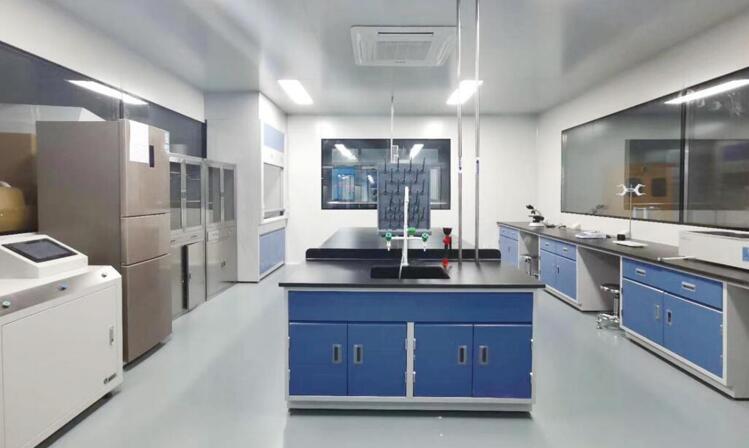Clean Room Project: Designing Spaces for Precision and Purity
- 2024-03-03
- View 13
Clean rooms are the backbone of industries that demand utmost precision, cleanliness, and sterility. These specialized environments find application in fields ranging from semiconductor manufacturing to pharmaceuticals, biotechnology, aerospace, and more. In this article, we will explore the intricacies of clean room projects, covering their importance, design considerations, key features, and the critical role they play in various industries.

Introduction
Clean rooms are specialized environments designed to maintain stringent control over airborne particulates, microbes, and other contaminants. They are vital for industries where even a minor contamination could lead to catastrophic consequences Clean room projects involve meticulous planning, design, and execution to create spaces that adhere to the highest cleanliness standards.
The Significance of Clean Room Projects
Industries such as electronics manufacturing, pharmaceuticals, biotechnology, and nanotechnology rely on clean rooms to produce high-quality, uncontaminated products. Clean room projects ensure that the environment is free from particles that could compromise the integrity of sensitive processes and products.
Designing a Clean Room: Key Considerations
Designing a clean room involves a holistic approach, considering factors such as:
Purpose: The intended use of the clean room dictates its design requirements and level of cleanliness.
Layout: Efficient space utilization and workflow are critical to prevent cross-contamination and optimize operations.
Materials: Surfaces, finishes, and furnishings are selected for their cleanliness, durability, and chemical resistance.
HVAC System: Proper ventilation and filtration systems are designed to maintain specific air cleanliness levels.
Access: Entry and exit points are strategically placed, often involving airlocks and gowning areas to minimize contamination risks.
HVAC Systems and Airflow Management
The heart of a clean room is its HVAC system. It ensures a controlled airflow that keeps contaminants away from critical processes. Positive or negative pressure zones are created to prevent external contaminants from entering, and HEPA or ULPA filters remove particles as small as 0.3 microns from the air.
Controlled Contamination: Filtering and Purification
Airborne particles are a significant concern in clean rooms. Filtering and purification systems eliminate particles, microbes, and gases. Clean room air showers, laminar flow benches, and clean room equipment play pivotal roles in maintaining a contaminant-free environment.
Materials and Surfaces
The choice of materials and surfaces is crucial. They must be easy to clean, non-shedding, and resistant to chemicals and disinfectants. Stainless steel, epoxy coatings, and other specialized materials are commonly used for clean room interiors.
Clean Room Classification Standards
Clean rooms are classified based on the maximum allowable particle count in a given volume of air. The ISO classification system ranges from ISO 1 (fewest particles) to ISO 9 (highest particle count). Different industries require different cleanliness levels.
Project Implementation: Steps and Challenges
Executing a clean room project involves several steps, including feasibility studies, design development, construction, commissioning, and validation. Challenges include maintaining design integrity during construction and adapting to evolving technology and industry standards.
Applications Across Industries
Clean rooms are versatile and find applications in diverse industries:
Semiconductor Manufacturing: Clean rooms create environments free from dust and contaminants, ensuring high-quality microchip production.
Pharmaceuticals and Biotechnology: Sterility is essential in drug manufacturing and biotech research to prevent contamination and ensure product efficacy.
Aerospace: Precision manufacturing and assembly of aerospace components demand clean environments to avoid defects and ensure safety.
Ensuring Compliance and Safety
Clean rooms must adhere to strict industry regulations and safety standards. Regular monitoring, testing, and validation are essential to ensure ongoing compliance.
Economic and Environmental Impact
Clean room projects require substantial investment, but their impact on product quality, efficiency, and regulatory compliance justifies the cost. The trend towards energy-efficient systems also minimizes their environmental footprint.
Conclusion
Clean room projects are the cornerstone of industries where precision and sterility are non-negotiable. These controlled environments ensure the production of high-quality products while safeguarding against contamination-related setbacks. As technology advances and industries evolve, the role of clean room projects in maintaining excellence will only become more pivotal.
FAQs
What are the key differences between ISO 5 and ISO 7 clean rooms?
ISO 5 clean rooms have a lower particle count and stricter air cleanliness requirements than ISO 7 clean rooms.
How often should a clean room be validated?
Clean rooms should be validated initially during construction and commissioning, and then regularly, typically annually or as required by industry regulations.
Can a clean room be modified after construction?
Yes, modifications are possible, but they should be carefully planned and executed to avoid compromising cleanliness levels.
Are there any industry-specific guidelines for clean room design?
Yes, various industries have their own specific guidelines and standards for clean room design, such as GMP for pharmaceuticals and ISO 14644 for general clean room classification.
What role does gowning play in clean room protocols?
Gowning is a crucial step in maintaining cleanliness. Proper attire, including gowns, gloves, masks, and shoe covers, prevents personnel from introducing contaminants into the clean room environment.
Kwang Cleanroom is proud to offer examples of a variety of our cleanroom projects below. Cleanroom Design and Build, Biopharmaceutical Cleanroom, Germfree Cleanroom, Class 10000 Clean Room, Design of Dust-Free Clean Room, Medical Device Clean Room, Hospital Operating Clean Room.
